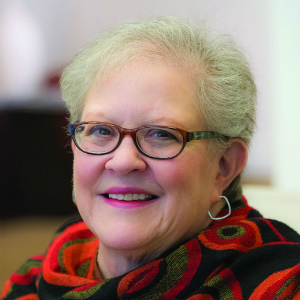Over the years, meetings industry associations have worked on issues of diversity to help meeting planners, their employers and clients develop a better sense of how to plan and hold inclusive meetings.
In fact, many years ago, the foundations of MPI, PCMA, HSMAI, IAEE (then IAEM) and others convened a “Unity Team” and funded research of corporate diversity programs to determine how to adapt best practices to the meetings and hospitality industry. From the research, a book, now long forgotten except by those of us who worked on it, was produced as a guide.
The issue of diversity and inclusion rises and falls for our industry as it does in the U.S. and abroad. With the changing patterns of immigration, all countries need to consider the impact of diversity on their businesses.
As we consider current and future demographics, following are questions planners and vendor partners can use to consider what and how to reflect both a changing diversity of those who attend meetings, buy products and stay in facilities, and look to the future of those they want to attract and include.
Though not by any stretch an exhaustive list of questions, it is a good foundation on which to build. And what we do know is that diversity is beyond “black and white” and that we should strive for inclusion of all who do and want to attend our meetings, use our services, and stay in our facilities.
Marketing Images
- What do we know now about our current membership or customer base? Who are those we want to attract as future members or customers?
- In what way do the images on our website and in any printed materials reflect a diverse audience--the one we have now or the one we want to attract? Or the changing demographics of the country(ies) in which we do business?
- Are there people who appear to be of different generational cohorts? (You know, those with wrinkles and gray hair as well as those with line-less skin!) Those who appear to have a visible disability, that is, people signing to each other? Reading Braille materials? Traversing space and having conversations while using mobility (wheelchairs, scooters) devices? People accompanied by a service animal?
- If couples or families are pictured, are they diverse, reflecting the greater number of interracial households?
- Couples of the same as well as opposite gender?
- Are the colors and images we use appropriate for all who will view them?
Speakers and Meeting Design
- Do the speakers we select all look like each other, such as all-white male Baby Boomers or all Gen Y to portray a “hip” culture?
- Do the speakers we select look like our current audience and the audience or customers we want to attract? In what ways are we selecting speakers who reflect a diversity of gender or gender identity?
- Race, religion, ethnicity? Generational cohort? Opinion and knowledge?
- How do we design our programs for different levels of experience? Title? Knowledge? Interest?
- Are there programs or sessions of varying lengths to accommodate different learning styles and learning needs?
- Is the seating, lighting and sound appropriate for people with disabilities?
- How do we accommodate people who speak languages other than that of the conference as their first language?
- How many rooms do we set aside for those who pray during the day and need a quiet place to do so? For nursing mothers to express milk or to nurse babies who accompany them? For those who may have suffered a recent loss to have a quiet space when their hotel room may be far from the meeting space?
- Do we vary seating to ensure that people who may find beanbag chairs cool but can’t figure out how to get down to or up from them accommodated? Are distances to and from sessions appropriate for those with mobility disabilities, or with bad knees or hips?
- With what information do we supply speakers, facilitators and moderators so they too are aware of our audience, the symbols/images and language to use in presentations to ensure inclusion?
Food and Beverage Events
- How have we surveyed those who will attend to learn of their possible needs for vegan, vegetarian, gluten-free, Halal, Kosher or other dietary needs? In what ways will we accommodate those who need food other than what we are serving?
- Have we ensured the food preparation and service staff is trained in the dangers of cross-contamination and will avoid it?
- If a meeting is held over Ramadan or other holiday when some in the audience may fast, how will we ensure they are included in hearing lunch speakers without feeling uncomfortable?
- Have we checked the height of buffet and other tables and of food displays to ensure someone using a mobility device can reach and obtain food, and/or are we providing assistance?
Sometimes it seems the more questions we ask, the more daunting the requirements seem, but consider this list a first step in your journey to make sure all of your attendees’ needs are at least taken into consideration.
Joan Eisenstodt is chief strategist of Eisenstodt Associates, a veteran meetings industry planner, consultant, trainer and educator, and a blogger for Meetings Focus.



